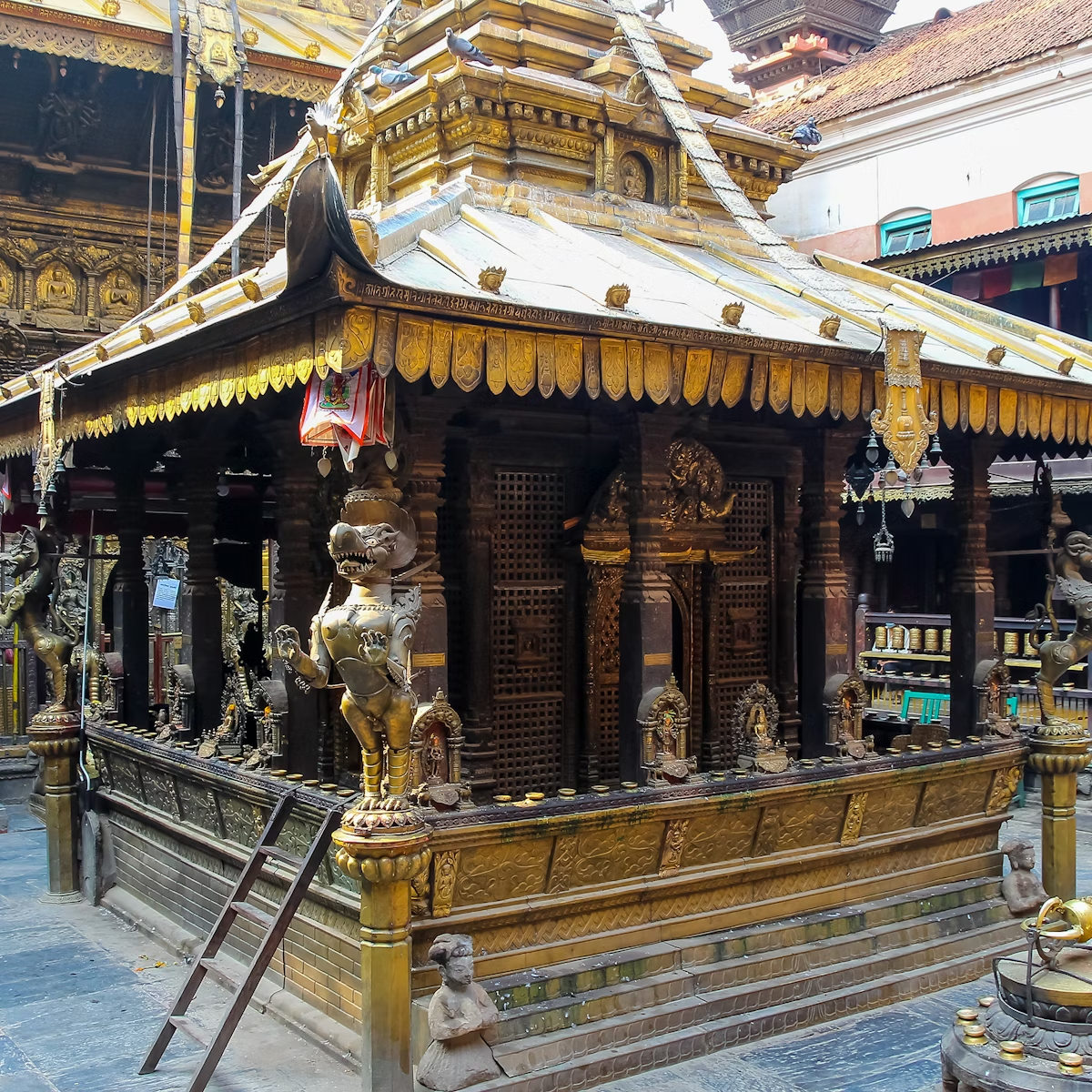Southwest of Asan Tole at the junction known as Kel Tole, this temple attracts both Buddhists and Hindus – Buddhists consider Seto (White) Machhendranath to be a form of Avalokiteshvara, while to Hindus he is a rain-bringing incarnation of Shiva. The arched entrance to the temple was destroyed in the 2015 earthquake and the temple is currently closed for repairs.
In the courtyard there are lots of small shrines, chaitya (small stupas) and statues, including a mysteriously European-looking female figure surrounded by candles who faces the temple. It may well have been an import from Europe that has simply been accepted into the pantheon of gods. Facing the other way, just in front of the temple, are two graceful bronze figures of the Taras seated atop pillars. Buy some grain to feed the pigeons and boost your karma.
Inside the temple you can see the white-faced image of the god covered in flowers. The image is taken out during the Seto Machhendranath festival in March/April each year and paraded around the city in a chariot. You can follow the interior path that circles the central building. The temple’s age is not known, but it was restored during the 17th century.
In the courtyard you may see men standing around holding what looks like a bizarre stringed instrument. This tool is used to separate and fluff up the downlike cotton padding that is sold in bulk nearby. The string is plucked with a twang by a wooden double-headed implement that looks like a cross between a dumb-bell and a rolling pin.
As you leave the temple, to the left (north) you’ll see the small, triple-roofed Lunchun Lunbun Ajima, a Tantric temple that’s red-tiled around the lower level and has some erotic carvings at the base of the struts at the back.
Just to the north of the temple on the side street known as Bhedasingh is a collection of shops selling topi (cloth hats) and the Nepali traditional dress known as a daura suruwal (a long shirt over tapered drainpipe trousers), including adorable miniature versions for children.








